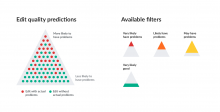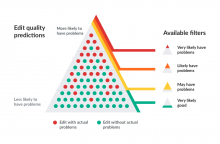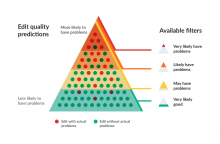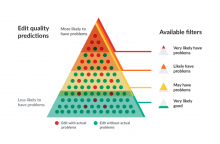Users may wonder why there are several levels of filtering (very likely have problems, likely have problems, may have problems...). The tradeoff to be made between accuracy and coverage ("recall" technically) is not always obvious.
The following illustrations (to be used in documentation may help) may help to clarify the concepts:





